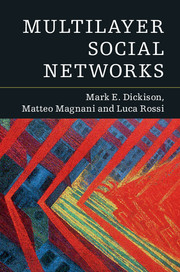Book contents
9 - Information and Behavior Diffusion
from PART III - DYNAMICAL PROCESSES
Published online by Cambridge University Press: 05 July 2016
Summary
I exhorted all my hearers to divest themselves of prejudice and to become believers in the Third Dimension.
– The SquareDiffusion in Networks
What information will spread through a social network? This is one of the most important questions about social networks, and the relationship between network structure and information has been at the center of research activity for many years. The simple idea that information and concepts propagate over the observable network connecting the actors of a specific community is too fascinating not to lead generations of researchers to try to answer this fundamental question. The existence of a strong relation between social network structure and information propagation processes has been observed many times over the years, at least since Katz and Lazarsfeld (1955) published their pivotal work on the flow of mass communication, which essentially looked, albeit within a different frame, at the role that opinion leaders played in networks. Despite this long-existing tradition of research, the full dynamic that connects networks and diffusion processes is still an open problem. In this chapter we set up a framework with which to examine the conditions under which it is possible to study how information spreads throughout a multilayer network. First, as we have done so far, the necessary concepts are introduced for single-layer networks, and then multilayer extensions are examined.
A Complex Circular Problem
Despite the wide body of research and the growing number of empirical data sets – often made of massive data gathered from online social networks such as those used byYang and Leskovec (2010) and Bakshy et al. (2012) – a clear identification and measurement of the role played by network structure within propagation processes remains an open problem. There are few areas of research where such a number of network properties converge, in a sometimes contradictory way, to create a phenomenon that is extremely difficult to observe.
- Type
- Chapter
- Information
- Multilayer Social Networks , pp. 149 - 166Publisher: Cambridge University PressPrint publication year: 2016



